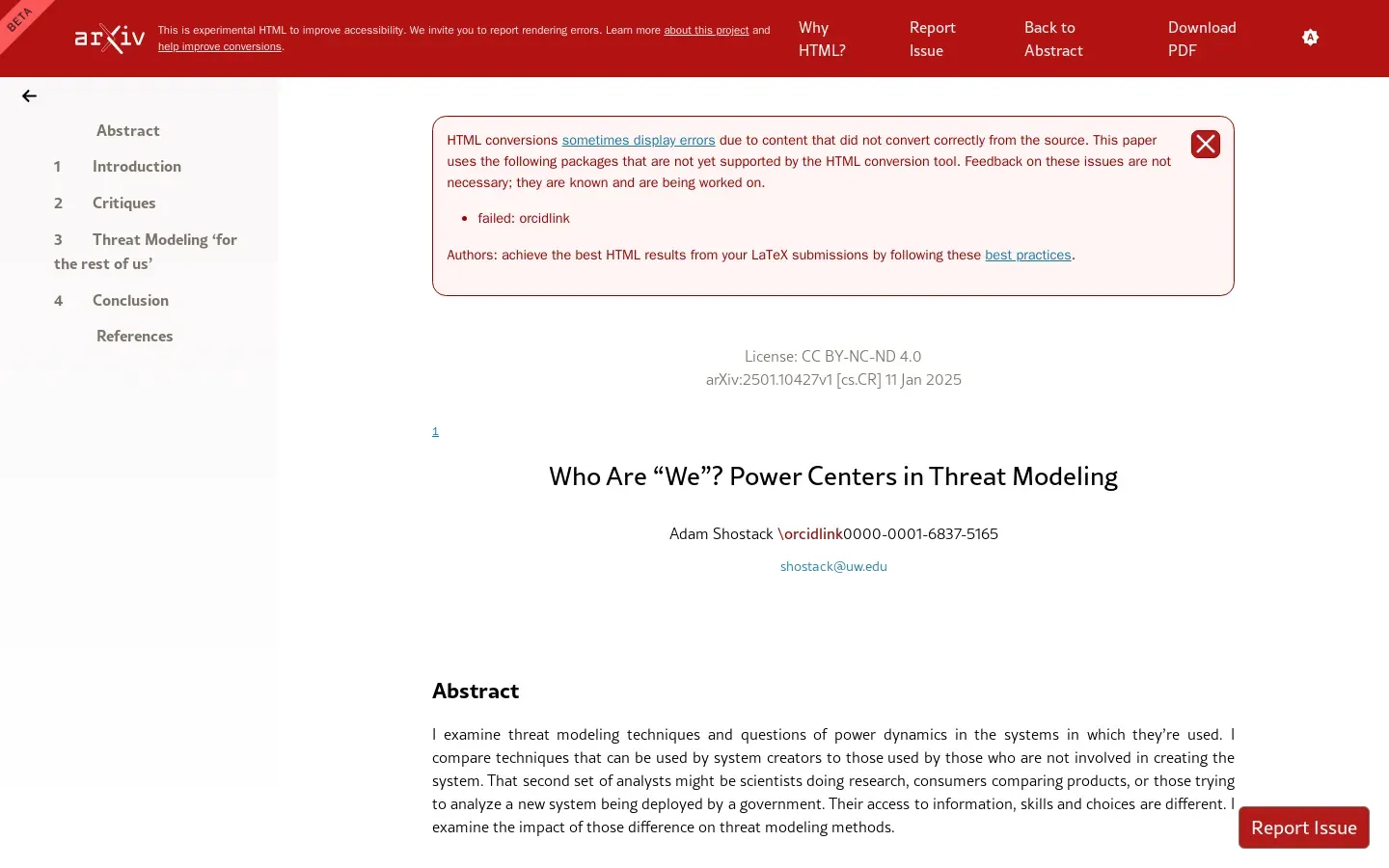
Inclusive Approaches to Threat Modeling in Cybersecurity
/ 4 min read
Quick take - A recent study emphasizes the need for a user-centered approach in cybersecurity threat modeling, highlighting how power dynamics affect the effectiveness of existing techniques and advocating for the inclusion of diverse stakeholder perspectives to enhance security frameworks.
Fast Facts
- Researchers emphasize a user-centered approach to threat modeling, highlighting the influence of power dynamics on its effectiveness.
- The study reveals that traditional threat modeling often neglects marginalized stakeholders, leading to incomplete vulnerability assessments.
- A mixed-methods approach was used, incorporating qualitative interviews and quantitative surveys to gather diverse stakeholder insights.
- Key frameworks discussed include STRIDE, PASTA, OCTAVE, and Attack Trees, which aid in identifying and analyzing security threats.
- The research advocates for a collaborative and inclusive threat modeling process to enhance cybersecurity strategies and adapt to evolving threats.
In an era where cybersecurity threats evolve at lightning speed, the methods we use to anticipate and mitigate these risks must also progress. Recent research delves into the nuanced world of threat modeling, highlighting not just the technical frameworks but also the critical interplay of human factors that shape our understanding of vulnerabilities. The findings advocate for a more inclusive, user-centered approach to threat modeling, which acknowledges the diverse experiences of all stakeholders, from systems creators to end-users. This shift is essential as the landscape of cyber threats is increasingly characterized by complexity and unpredictability.
Central to this discourse is the examination of power dynamics within threat modeling techniques. Traditional methodologies often privilege certain perspectives—those of system developers and security professionals—while marginalizing voices from external analysts such as consumers and independent researchers. This imbalance raises important questions: How do these power dynamics affect the effectiveness of threat modeling? Are we adequately considering the insights and concerns of those most impacted by cybersecurity measures? The research suggests a pressing need to reevaluate our current practices, pushing for an integration of varied viewpoints that could lead to more robust defenses against cyber threats.
Among the tools and frameworks highlighted in this examination are several key techniques that promise to enhance our threat modeling capabilities. One such tool is the STRIDE framework, which categorizes different types of threats based on their nature—spoofing, tampering, repudiation, information disclosure, denial of service, and elevation of privilege. By providing a structured way to identify potential attacks, STRIDE empowers teams to proactively address weaknesses in their systems. Another notable technique is Attack Trees, which visually represent potential attack paths and their associated risks, making it easier for teams to prioritize their responses based on likelihood and impact.
Yet, despite these advancements, limitations remain. The research underscores the necessity of investigating how power dynamics can skew threat assessments and ultimately inform security protocols. For instance, if primarily technologists dictate threat models without input from end-users who interact with systems daily, critical vulnerabilities may go unaddressed. This call for a more democratized approach to threat modeling is not just theoretical; it has real-world implications that could significantly enhance organizational resilience against cyber threats.
Looking forward, the implications of these findings extend into several practical applications within cybersecurity. Organizations are encouraged to adopt collaborative approaches in developing threat models that incorporate input from a wider array of stakeholders. Additionally, fostering environments where diverse perspectives are valued can help illuminate blind spots that often elude traditional security assessments. As we advance into a future where cyber threats continue to proliferate, embracing this more holistic view may prove essential in building defenses that are not only effective but also adaptive to an ever-changing landscape.
In conclusion, as cybersecurity professionals reflect on these insights into threat modeling and power dynamics, they must recognize the urgency for evolution within their strategies. A more inclusive framework promises not just enhanced security outcomes but also a culture that prioritizes collaboration and shared responsibility in safeguarding our digital assets. Embracing this paradigm shift could be pivotal as we navigate the complexities of future cyber challenges together.



